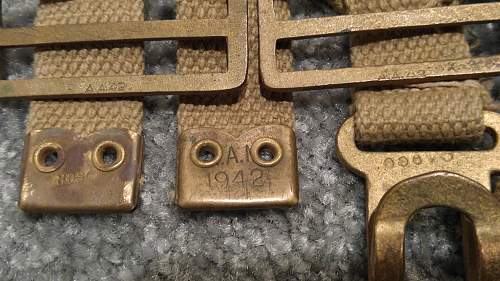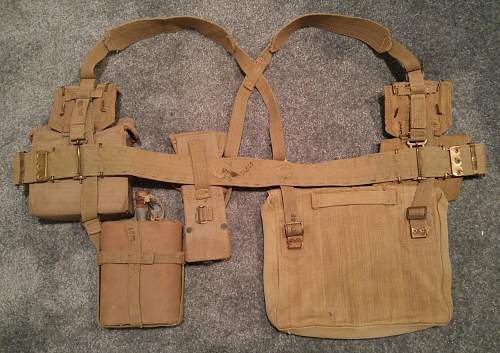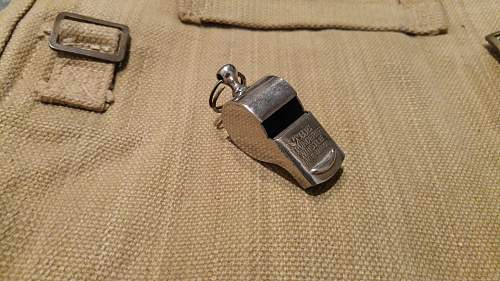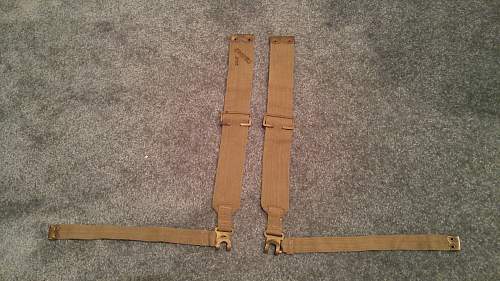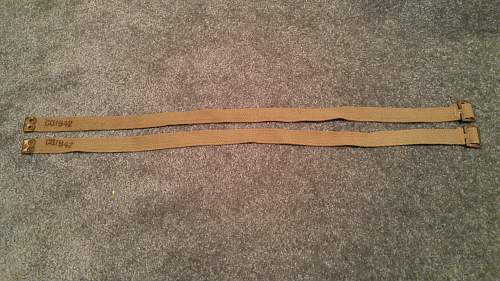Indian-made Pattern 1937 Officers’ Webbing Set
The Government Harness & Saddlery Factory was operated by the Military Supply Department of the Government of India and was entirely devoted to the manufacture of military equipment. It had its own brass and iron foundry for making equipment fittings and during times of mobilization it could place orders with the private firms of Cawnpore, which were brought up to the standards of the harness factory.
The Government Harness Factory expanded rapidly to meet the needs of the Indian Army during the Great War, employing around 4,000 workers by 1916-17. Demand decreased during the interwar years.
In addition to leather accoutrements, the factory began producing Mk V Gasmask Bags and Pattern 1908 Web Equipment components. It is unclear when the production of webbing commenced or if full sets of webbing were manufactured, but extant examples of frogs and water bottle carriers bear 1930s dates. The Government Harness & Saddlery Factory marked their items with a Ca. for Cawnpore, which changed in 1940 to ca. The brass fittings on early pieces were also stamped with the same Ca. mark and were probably made on the factory premises. In general, early production webbing is of higher quality with better stitching and fittings. Additionally, some early pieces feature a mix of canvas and webbing.
In November 1941, large scale orders for Pattern 1937 Web Equipment were placed by the Indian Government. The Government Harness & Saddlery Factory produced the full range of components, but the wartime webbing was of a much looser weave with undyed stitching and cruder brass fittings made by outside firms. Additionally, snaps were a mixture of imported British-manufactured snaps made by Newey Brothers, Limited of Birmingham as well as locally made Indian snaps of poorer quality. The latter featured the classic pebbled pattern or a snowflake pattern unique to India. The stamps on wartime webbing are often upside down and poorly stamped, which may be due to a largely Indian workforce with less supervision from European foremen. The government factory may have called upon local private firms to fill these orders during the war.
This set of Pattern 1937 Officers Webbing was made by the Government Harness & Saddlery Factory, Cawnpore between 1941 and 1943.
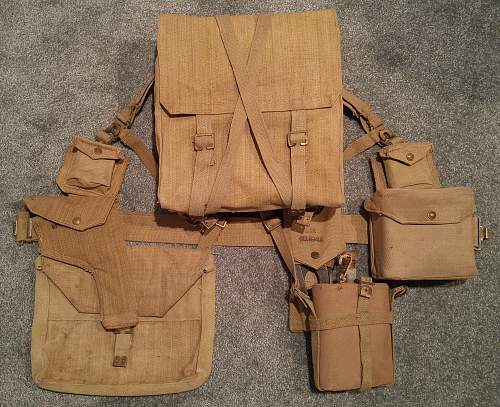
Outside view of the set without the pack.
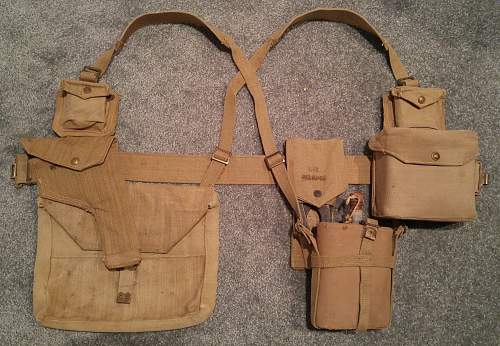
Compass pocket and binocular case (note the lack of side buckles on the latter).

Indian acceptance stamp on the binocular case. This case was made by the Govt Harness Factory, as evidenced by the undyed stitching and characteristic markings.
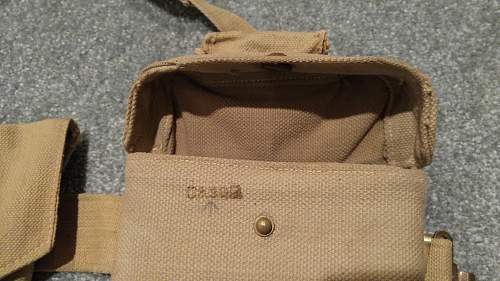
Indian binocular cases use tinned steel plates instead of fiber stiffening. This example would have originally had a wool pad on the bottom to protect the binoculars.
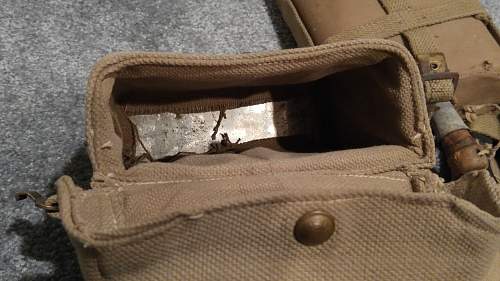
The back of the binocular case has the characteristic boxed number stamp of webbing made by the Govt Harness Factory.

A close-up of an Indian-made snap on the binocular case with its distinctive snowflake design.
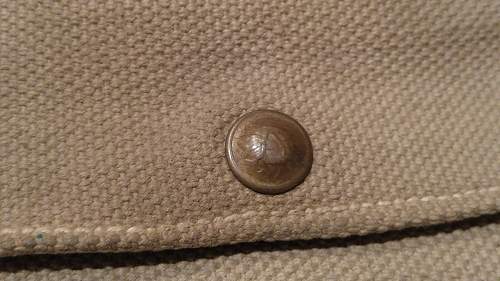
The inside of the same Indian-made snap lacks markings and appears crude.
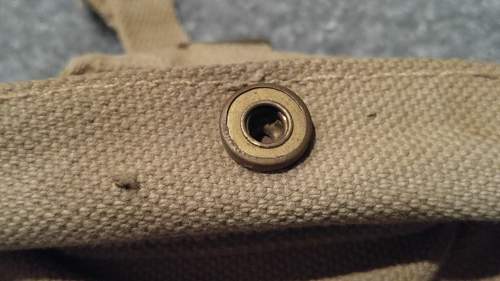
The inside of the compass pocket shows the rough, gray wool liner and faint ca1943 maker mark. It also has a tinned steel plate for stiffening most likely.
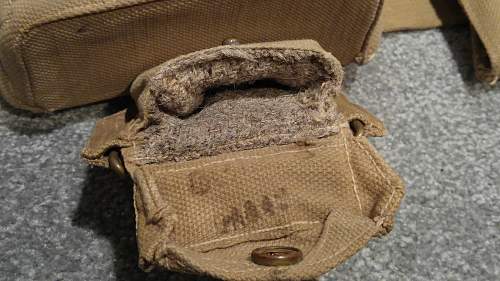
A close-up of a British-made snap on the compass pocket with its usual pebbled design.
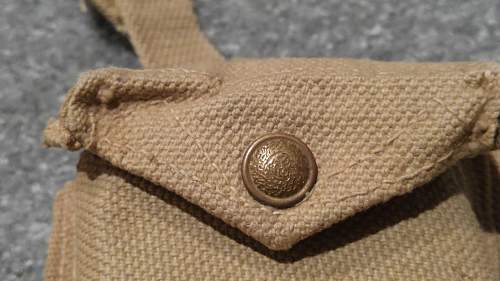
The inside of the same British-made snap is stamped N.B.LTD. for Newey Brothers, Limited of Birmingham.
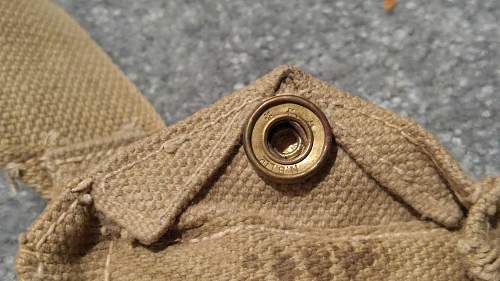
Indian-made waterbottle in carrier and wirecutters frog.
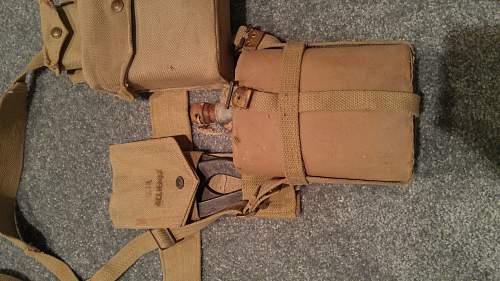
The wirecutters frog has a lid comprised of two thin pieces of webbing stitched together and is maker marked ca1942. The acceptance stamp features an Indian broad arrow flanked by W & 19.

The Indian-made waterbottle is made of zinc-coated steel with a wooden stopper as well as a rough wool blanket cover concealed in khaki drill. The webbing carrier is closed by means of a buckle and strap, which replaced the snap closure in 1942. The closure strap is marked ca1943.
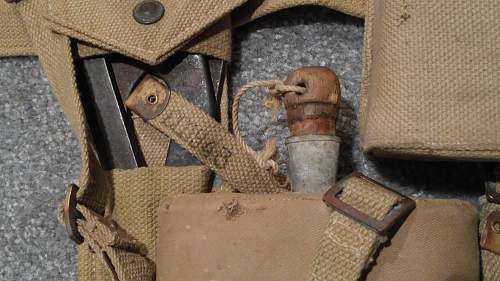
Ammunition pouch and pistol case (note the striped webbing on the latter characteristic of Indian-made webbing). The Indian-made holster also likely has tinned steel plate on the very end as a stiffener.
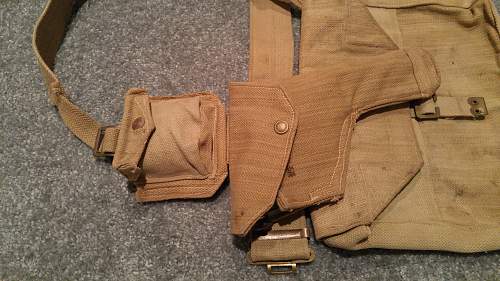
The boxed number stamps seen on webbing made by the Govt Harness Factory, here seen on the back of the ammunition pouch and pistol case.
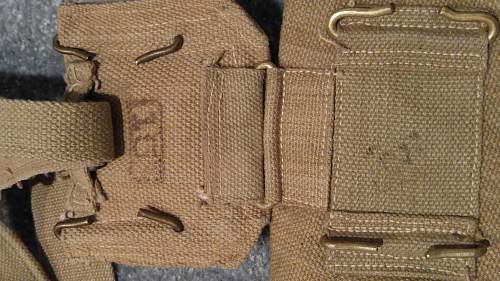
The inside of the pistol case has a W/|\19 acceptance stamp and an upside-down ca1943 maker mark. The construction of the flap is different than British and Canadian-made holsters.
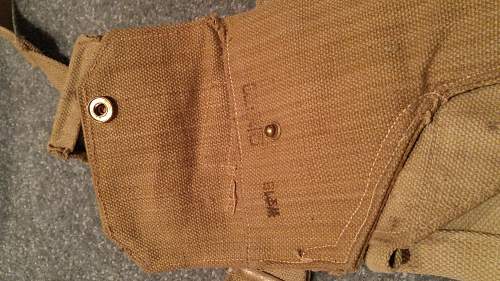
The ammunition pouch lid is marked ca1943 and features an Indian acceptance stamp. Note how the base of the pouch is stitched together, rather than integrally-woven like British examples made by Mills and Wrights.
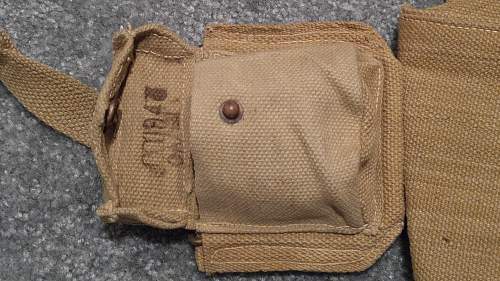
The ammunition pouch lacks the wool lining of the compass pocket.

Indian-made Officers haversack
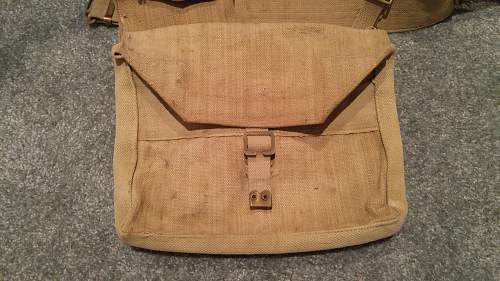
The inside of the haversack has two pocket with snap closures.
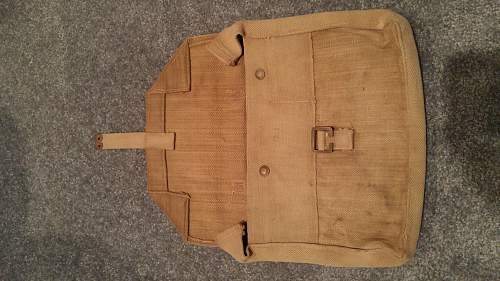
A close-up of the haversack shows another Indian-made snap with its distinctive design as well as a very faint ca1943 maker mark.
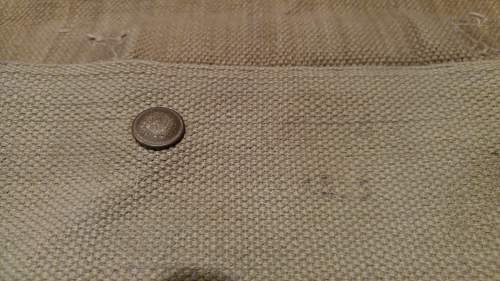
The inside of the haversack is divided by white canvas.

A close-up of one of the buckles on the back of the haversack stamped I MILLS 1942.
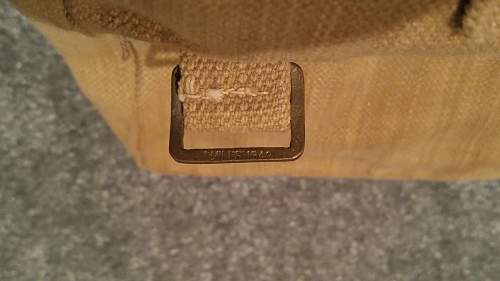
This whistle is marked THE THUNDERER WHISTLE MADE IN INDIA.
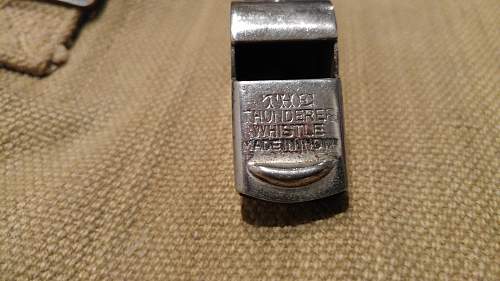
The base of the whistle is marked with the maker details.
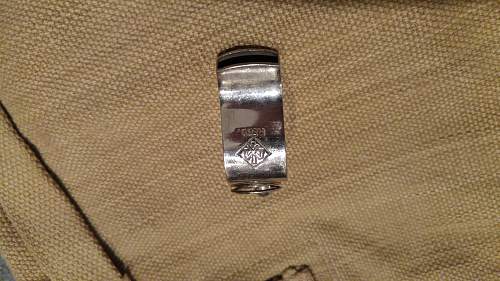
The waistbelt is marked with an S for small as well as an upside-down ca1943. The braces are also marked at the ends ca 1942.
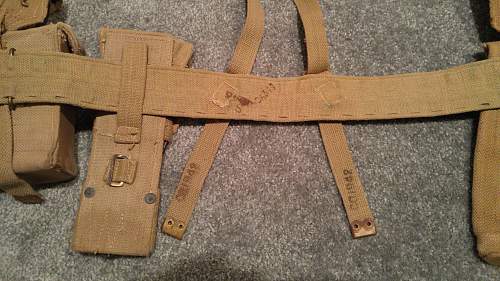
The reverse of the brace shows an Indian acceptance stamp.
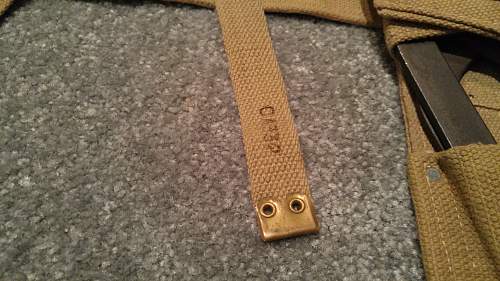
The left brace features a loop. Note how the shoulder flares on the braces are separate pieces of wider webbing stock.
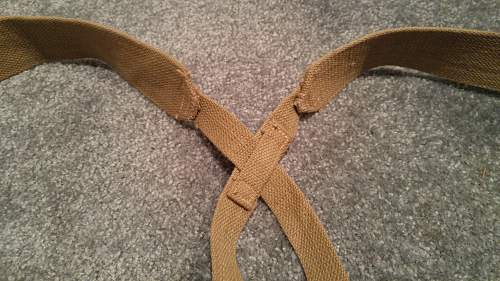
The brass fittings on the belt are marked A.A. 43, which may have been made by the Government of Uttar Pradesh Handicrafts Artisans’ Association.
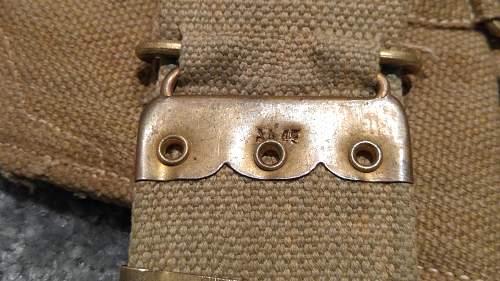
The other fitting is also marked A.A. 43. Note the crude construction of the brass belt slide.
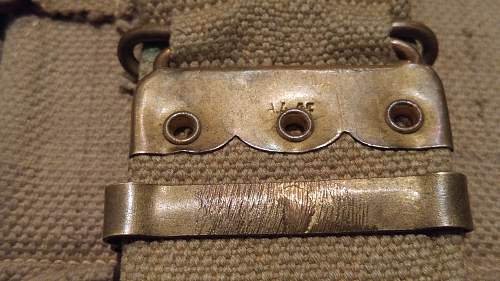
The brace attachment is marked ca1941.
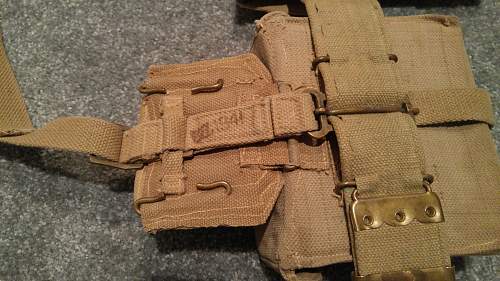
The second brace attachment is also faintly marked ca1941.
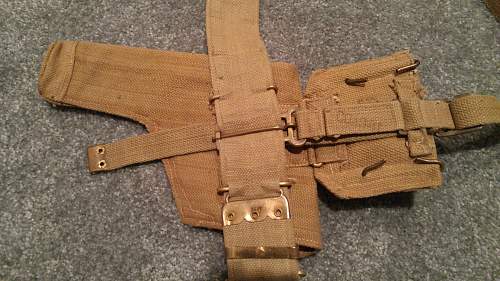
Pack (1908 Pattern) and support straps (1908 Pattern).
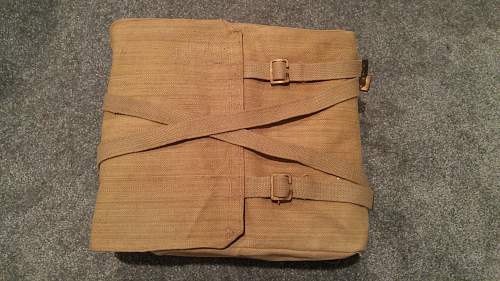
The pack is marked ca1942 and features a boxed number stamp on the flap.
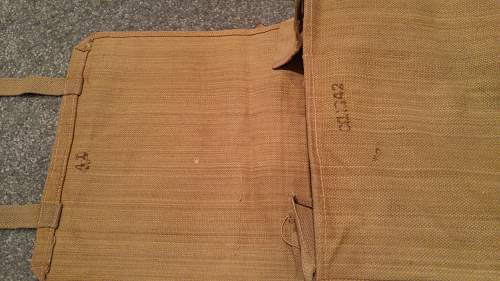
A close-up of the weather flap with its brass eyelet.
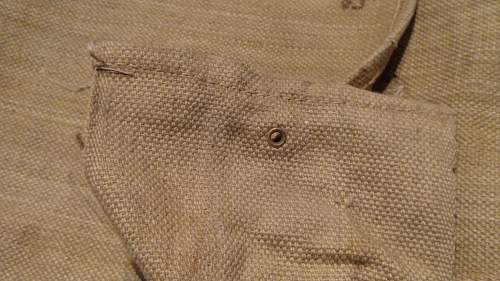
A close-up view of the pack closure buckle stamped I.M.W. 42.
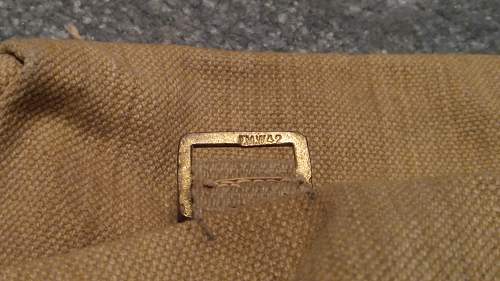
The other pack buckle is also stamped I.M.W. 42.
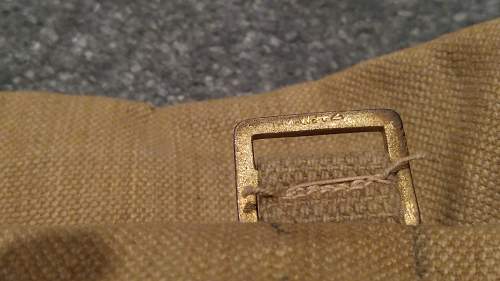
A close-up of the pack closure straps stamped K.A.M. 1942.
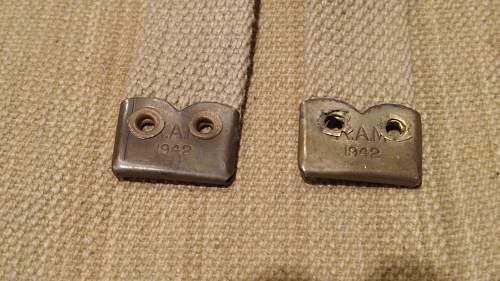
A view of the reverse side of the pack, showing the shoulder straps.
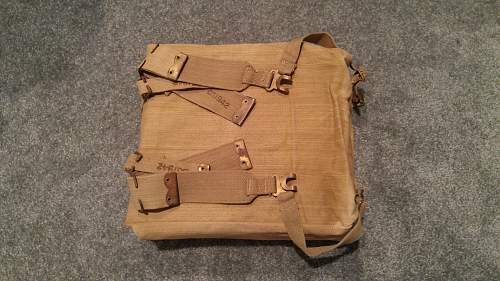
Both shoulders straps are marked ca1942. Albeit on opposite sides.
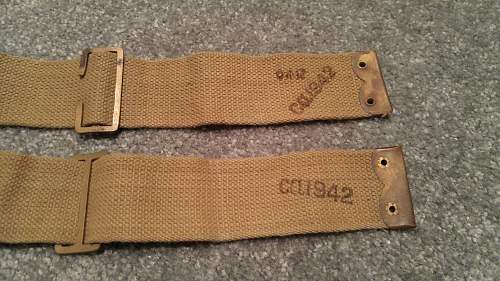
A close-up showing the stampings on the brass fittings of the shoulder straps. The 2 Twigg buckles are marked A.A. 42, the brass hook from the LH shoulder strap is stamped with a typical Indian acceptance stamp of the form C/|\### and the 1 strap tips are marked K.A.M. 1942 and N.D.S.42, respectively.
